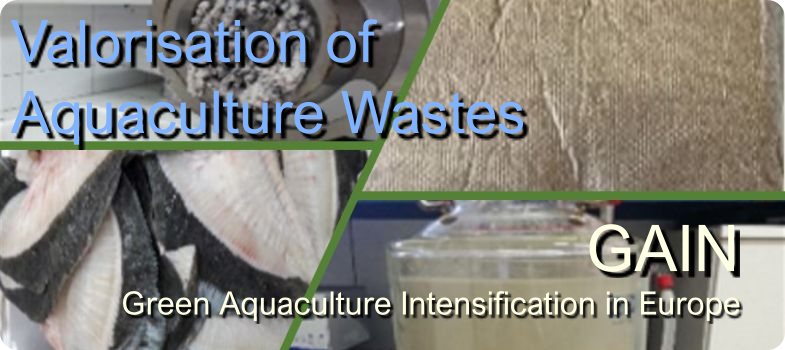Credits and acknowledgements (Section 3.1)
Authorship
The section on the optimal production of fish protein hydrolysate was developed by Xosé Antón Vázquez Álvarez, Group of Recycling and Valorisation of Waste Materials (REVAL), IIM-CSICVideo
The video "Production
of fish protein hydrolysates from aquaculture by-products" was filmed
and post-produced by Rafael Luis Méndez Peña (RAFAELLUISMENDEZPEÑA, audiovisual
company, http://rafaelmendezp.com/) under the direction of Xosé Antón Vázquez Álvarez,
Group of Recycling and Valorisation of Waste Materials (REVAL), IIM-CSIC. It is licensed under Creative Commons 4.0 cc-by-nc-nd.
It was filmed at IIM-CSIC. Staff from REVAL (IIM-CSIC) appearing in the video are indicated in the final credits.
Figures
Figure 1: Catalysis mechanism of peptide bond breakdown by aspartate, glutamate or metalloproteases. It shows schemes describing a kind of peptide bond breakdown and was developed by Xosé Antón Vázquez Álvarez, Group of Recycling and Valorisation of Waste Materials (REVAL), IIM-CSIC. It is licensed under Creative Commons 4.0 cc-by-nc-sa.
Figure 2. Representation of the mathematical methods
applied for the optimization of enzyme hydrolysis of fish wastes. It shows strategies
for the optimization of enzyme hydrolysis of fish wastes and was developed by Xosé Antón Vázquez Álvarez, Group of Recycling and Valorisation
of Waste Materials (REVAL), IIM-CSIC. It is licensed under Creative Commons 4.0
cc-by-nc-sa.
Figure 3. pH-stat reactors of different working volumes
100 mL, 5 L and 300 L shows pictures
of three pH-stat reactors used for FPH production. It was developed by Xosé Antón Vázquez Álvarez, Group of Recycling and Valorisation
of Waste Materials (REVAL), IIM-CSIC. It is licensed under Creative Commons 4.0
cc-by-nc-sa.
Figure 4. Pictures showing the
different products generated in the enzyme hydrolysis of salmon heads (left).
Flowchart dealing with the production of FPH from aquaculture wastes together
with the recovery of fish oil and bioapatites (right). The pictures
and scheme show the stages needed for FPH production. It was developed by Xosé Antón Vázquez Álvarez, Group of Recycling and Valorisation
of Waste Materials (REVAL), IIM-CSIC. It is licensed under Creative Commons 4.0
cc-by-nc-sa.
Figure 5. Pre-industrial flowchart of
FPH production processes, products obtained and mass balances involved. This
scheme is focussed on the processing of salmon head wastes. It was developed by Xosé Antón Vázquez Álvarez, Group of Recycling and Valorisation
of Waste Materials (REVAL), IIM-CSIC. It is licensed under Creative Commons 4.0
cc-by-nc-sa.
